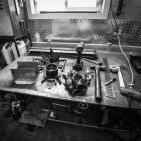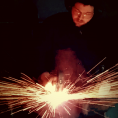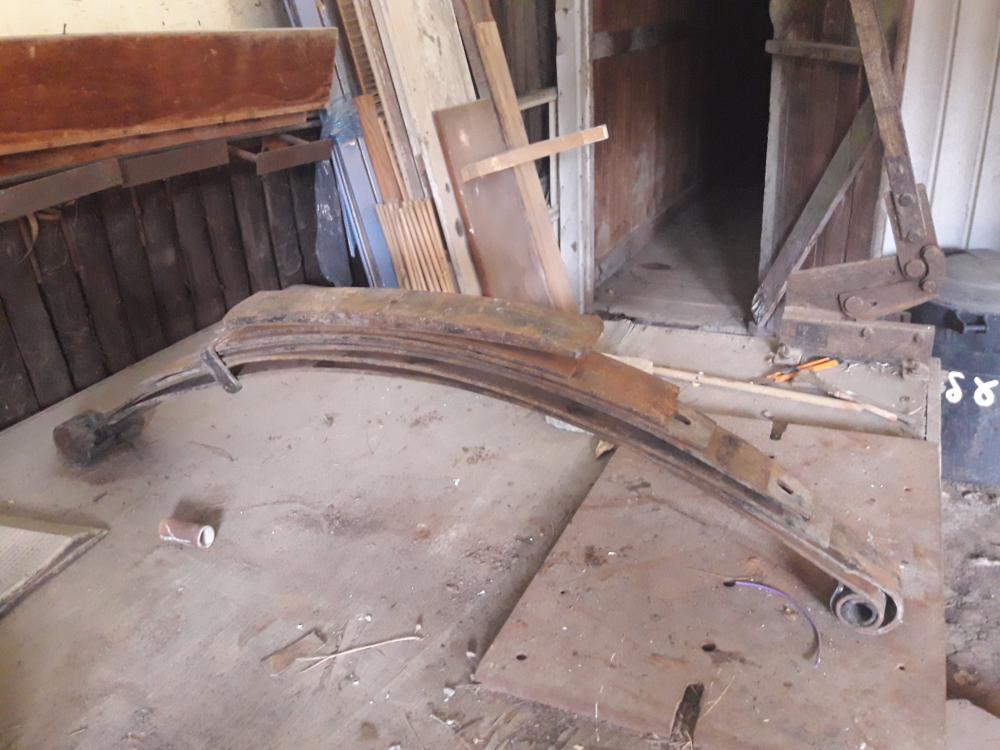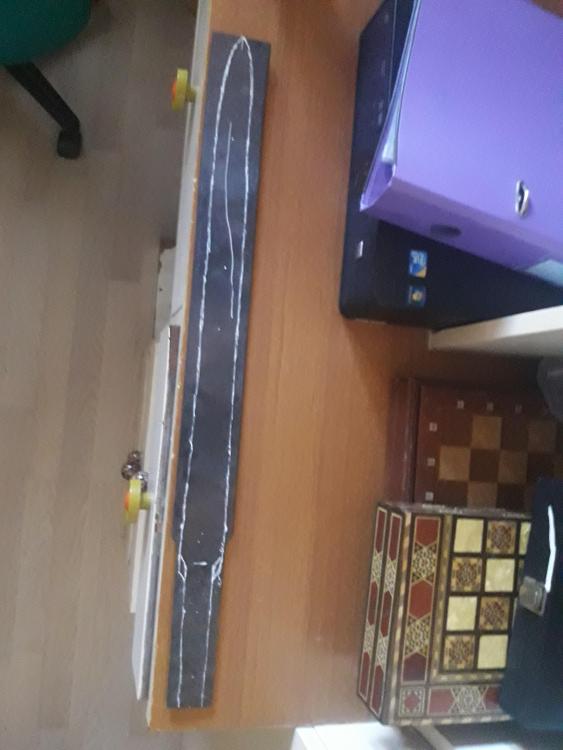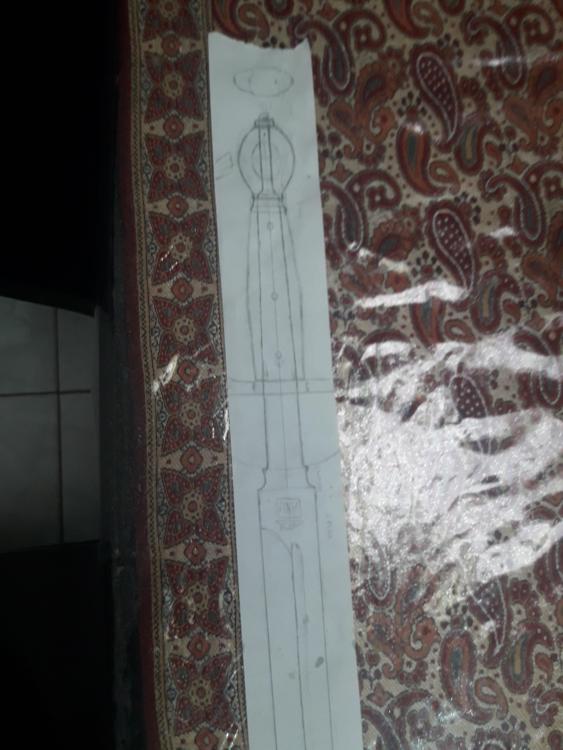-
Posts
32 -
Joined
-
Last visited
Profile Information
-
Gender
Male
-
Location
Israel
-
Interests
Mainly drawing, I'm trying to make some music. I read, play video games and watch some shows
Recent Profile Visitors
1,080 profile views
-
I think I'll do good by messing with the sword tapor and pommel weight & length, I'm patient enough to not get it right first or second time. I don't know what you consider hard but this sounds pretty hard. The best I can do is hand wrap it with some tention, I don't have any dedicated tools. if it wouldn't do I can stick to wood. I'm not fond of all metal gray rapiers, I think of casting some brass parts and brass covering some metal parts to get some more color. If anything, the sword will at least look good. Can you combine bronze or brass into your wires and make it look good?
-

Am I week or Did I misjudge the Steel?
Shalev Zohar replied to Eric Green's topic in Blacksmithing, General Discussion
One point that didn't come up here is your anvil; If you have a light/unfastened anvil/aso, its give might steal a major slice of your strike power. I've had this happen to me with my first 7kg aso, things weren't moving as fast as they should, especially in upsetting, because the whole thing was moved by my swings. My heavier new aso's have less of this problem. I don't know what you hammer on but if it's light at least give it a proper stiff stand. Might improve your speed a lot -
Harmonics are my main concern; I'm sure they won't be as good as they can, and I find it hard looking for tips on them. I'll generally try my best with tapers and weight distribution and hope the harmonics will come with it. Grips are my stronger side, wire wrap might be harder than it seems. In regards to the design I'm thinking about switching to a sidesword, might be easier. Not fatigued, it was kept as replacement and didn't see much action, only collected some rust. I'll still buy new stock if I find good ones, but overboard is a lot of shipping costs and over here it's nonexistant/comes in tonnes. I'll probably search for someone with an electric kiln big enough because I doubt my abillity to get even, good heat. I probably have the connections needed for this and will beat this obstacle once I'm there. A good kiln solves all the problems. Once I'm done I'll try a safe flex test to make sure it won't break when it's not in a controlled environment, and of course never fling the thing violently at hard objects, especially when said friends are within launch range.
-
I'm no master, all forging projects I do are first times. I mess up a lot and take much longer due to lack of experience. I cracked knives in water quenching and burnt them in the forge, I dropped hot metal, made my fair share of rebar things that shouldn't be rebar and got burnt and cut. I'm no noob either. I've put in the years and experiments. I used what I have and forged a wide array of tools and weapons. I love forging and I love learning. I'll never make the same thing twice. It's a tough project but I came here to learn, I've already got much needed advice and changed my plans majorly. I've been forging a long time before thinking of a sword, I'm in no way fully prepared to it but I think my chances are okay. This is not a whim project, I do a lot of preperations, just made a better forge and my first tongs, planning on making a dagger as was recommended here to practice bevels. The sword will take a lot of time until created. It might fail, and if I succeed it won't be perfect, and I'll be slower than a dead turtle on land. But I don't want a sword, I want to make a sword. If I fail, so what? Bottom line: please don't discourage my project. I may not be fully qualified but it's something I want to try before I lose the opportunity. There's no harm in me failing- not to me nor to you. All I need is advice; If you threw me into a blacksmith's shop this moment with only what I know, I wouldn't be able to make it from beginning to the end of this project. I'm open to anything, the more I know the bigger the chances I succeed. I just did two identical pieces for tongs, one I flipped to work on the back, then laid it on the ground. A bit ashamed to admit but I forgot I flipped the thing, and came to pick it up with the wrong side. Glad I wore a glove, my hand is okay, the glove has a hole. To my defense I wasn't injured in blacksmithing a whole year, quite a feat for me.
-
I dropped the need to upset, no way it'll work. 5mm is thick enough and I have a longer piece I can use. I wanted 7mm in the base because it's normal in both swords and rapiers, I wanted extra material for the grinding and I wanted extra rigidity to both keep it from bending or breaking, in the quench or in use. Of course I'll do a distal taper. Trust me with not quenching the thing in water, although can't say I didn't tortured knives like that in the past... Why is fishmouth easier? I've never heard such thing. I'll forge the distal taper, tang and tip, maybe the fuller too, but I'll probably grind the bevels. I'm more trusty with my skills in grinding and it's harder to make critical mistakes fast that way. It'll have a good distal taper, be short, and have a less complicated hilt; It won't weigh more than 3 pounds even with the thick base. Worst case scenario: It's too heavy and I grind a bit more.
-
Just did in some 2.5/1 ratio while making tongs, it shroomed a little and not much trouble beyond that except for the usual taking lots of time. You're correct, upsetting 8/1 ratio (what I hoped for) would be impossible; With a dedicated tool maybe, but still a worthless struggle. 5mm is still enough for the sword, yet I am looking for alternatives WHY? You are equating using a leaf spring that survived a flex test to make a sword that'll be responsibly handled, to killing myself. I've searched on other sites and it seems like many people did it and almost nobody ran into problems except the need to properly anneal it so it won't bend back. I didn't say that. At some point the metal would rather bend or shroom instead of upset and then the material will hardly upset no matter how many times I try. I fixed many bends, it's one of the easy things in forging. A few days ago I even let my cousin who never forged before do some straightening and he did just fine. It's not the bending that is the problem, it's the bending instead of upsetting. I came here for advice, not orders. Watch me.
-
I don't know this system, I believe you and next time I will search more. It's weird but Google works in mysterious ways.
-
I'm not at my home right now but when I come back I'll be sure to search for some new metal first thing. If I find a good buy I'll take that, but shipping is always a problem and no price will be better than none. I stood on the leaf and curved it a few nice degrees, it was perfectly springy and shown no issues. even if I'll choose to work with the leaf, I'll test quench a piece first so the sword won't be too brittle, search for cracks, hit some things when it's not sharp and I'm fully protected and do a controlled bend test to see if it brakes. If it doesn't fail it shouldn't fail later, unless I put it under circumstances that would break normal swords. I'm not going to abuse the thing and obviously not going to do it while people are anywhere near. It's a sword, I'll handle it with caution. There's always the option of trying to pattern weld as well, where even normal cracks should do no harm (please do tell me if I'm wrong), that'll delay the project until I'm familiar with pattern welding. Keep in mind, I'll probably end up with new metal, the spring poses lots if issues, and if I pick it I'll put it under less use to keep it safe.
-
That'll mean multiple topics for such a long project, isn't there a way to keep it to one place? My spring was kept as a replacement one, but I don't know how much use it saw before that. Can you detect the microfractures after polishing? I have enough spare to make a test piece for the heat treating. I have the time and spare metal to risk a break, but I'll check into new steel, if it's not too much cost for both the metal and shipping I'll consider it. My options are: Make a tool for upsetting and procceed as planned/ try working with what I have and maybe still make it/ use a longer piece of leaf I have/ fold and make pattern welded steel, using hand hammers (eek)/ buy new steel. As for the upsetting I'll repeat a little: I only have hand hammers, some heavy. I've got lots of time, not too much skill, and I can weld a dedicated tool to keep it straight.
-
Thank you, and sorry for asking something that has already been answered. I tried doing many searches like this but it seems like searching inside the site was a bad idea and outside probably didn't use the correct keywords. I tried doing your search but had to modify it to make it work. This is unfortunate for me because I'll have to find workarounds, but I do have some. now that the topic is not as relevant is it commonplace to take it down?
-
Hey, me again! Not much progress with the sword, as to be expected. I'm still setting up the new place, I will hopefully make a killer forge in a week, and then some tools to pile up. This is the problem: I want to make a sword with a base thickness of 5-7mm, base width of 2.5-3 centimeters and length of at least one meter, and a lot of extra material to grind because I don't trust myself enough with making clean forging work in there. I've got a 5mm thick 6cm wide 70cm long piece of spring steel. to get both higher thickness, length and take advantage of the axcess width I want to upset as much of it as I can. My question is: What is the width to thickness ratio at which the leaf will no longer upset but just mushroom or crumble? or more simple to me: the maximum width at which you can still upset a 5mm thick bar? I'm no expert in this and I don't want to fight metal for too many hours, so this needs to be a reasonable width as well, I will square the bar beforehand with a disc, but I'll also cut the final working bar out then and for that I need the width. I changed my mind and the bar will not be sword shaped as in the picture but just rectangle. I'd also welcome some general upsetting tips And a quick question: How'd you recommend for me to show the advancements in the sword project here?
-
Can't make a belt grinder, it will be practically harder than a sword for me. I'm also less interested in messing with electronics and such. Building a gas forge that will let me get even heat will be less practical than finding one that already exists. I forge on my free time and give away forged stuff to my friends because I just enjoy forging. My free time is very limited and I won't use it for stuff I don't enjoy. I will however try making simpler tools that require only forging, maybe some tongs and hammers. Don't know how practical it'll be because the shop I'm intending to join will probably have both them and the heavy tools. The more mistakes I make the more dangers-to-avoid I can put into my glossary :^)
-
Rapiers tend to go bananas (literally) by the slightest mistake before the heat treat, that's why mine will be extra thick and short. The main problem probably is that a Rapier won't fit in your average kiln... That is unless you bend it in two while in the kiln and straighten it back right before the quench! (A terrible idea for many reasons) SWORDS DO NOT MAGICALLY TURN INTO FRUIT

